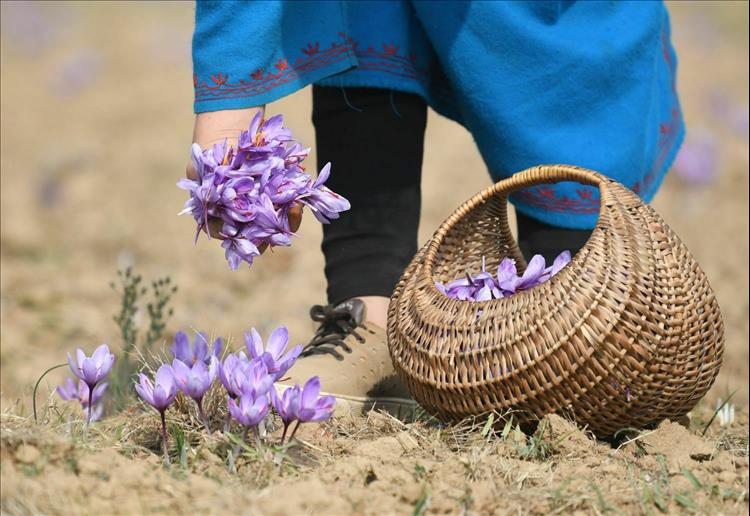(MENAFN- Kashmir Observer) Srinagar- On a foggy December afternoon, sitting by his saffron fields in Pampore, Mohammad Yousuf gazes out at the dry, cracked soil, his thoughts drifting to a harvest season that passed him by. The fields have yielded little this year-far less than what he had hoped for.
“This land has given us everything, but now it feels like it's giving up,” he said.
ADVERTISEMENT
Kashmir's saffron cultivation, renowned for producing one of the world's most expensive spices, has been severely impacted by prolonged dry spells and climate change. In other words, the dry spell and climate change has spelled doom on this priced crop.
ADVERTISEMENT
Farmers in Pulwama and Budgam have observed significant declines in yield, with some reporting reductions of up to 70 percent compared to previous years.
“It was almost the dry season this year. Without water, how can we sustain our crops?” lamented Mohammad Yousuf.
Read Also
38-Year-Old's Innovative Farming Method Leads To First Saffron Bloom In Lucknow
Dry Spell Impacts Saffron Production In Kashmir
The valley has experienced intense heat since June, with temperatures reaching 34°C. On July 3, 2024, Kashmir recorded a temperature of 35.6°C, the highest in the last 25 years.
“The dry spells have become longer, and the rains, when they come, are too heavy, washing away what little we have left. It's heartbreaking to see our fields barren,” said Shakeela Begum, a grower from Pulwama.
Official data indicates that saffron production over the past two decades has decreased by 65 percent, dropping from 15.95 tonnes in 1990 to 2.6 tonnes in 2023-24. Additionally, the area under saffron cultivation has shrunk from 5,707 hectares in 1996-97 to 2,387.71 hectares in 2018-19.
In response to these challenges, the government introduced a drip irrigation system in 2010 as part of the Rs 412-crore National Saffron Mission to combat prolonged dry spells.
“The National Saffron Mission had good intentions, but the implementation faced technical and logistical challenges. We are working to address these issues,” admitted an official from the Agriculture Department.
The ongoing crisis has serious implications not only for the saffron growers but also for the regional economy. Saffron, often referred to as the“golden spice,” is an integral part of Kashmir's agricultural heritage, and its decline threatens the livelihoods of thousands of farmers who depend on it for their income.
“We used to produce enough to support our families, but now, I have had to borrow money just to survive. This isn't just about saffron-it's about our lives,” said Abdul Ghani, a seasoned grower in Budgam.
Climate experts have also weighed in on the issue.“The rising temperatures and changing rainfall patterns are not temporary. The government and farmers must adapt quickly to preserve this iconic crop,” said Dr. Farooq Ahmad, a leading climate expert in the region.
The challenges faced by Kashmir's saffron farmers due to prolonged dry spells and climate change highlight the urgent need for effective government interventions and climate-resilient farming practices.
“We have invested significantly in infrastructure and research, but changing climate dynamics require long-term and collaborative solutions. Farmers also need to adopt modern practices,” said a senior official in the Horticulture Ministry.(inputs from KINS)
Follow this link to join our WhatsApp group : Join Now




















Comments
No comment